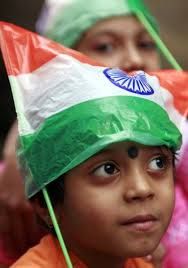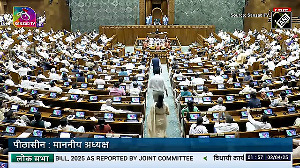 For the June quarter, finance ministry officials and economists have pegged GDP growth between 5.2 and 5.5 per cent
For the June quarter, finance ministry officials and economists have pegged GDP growth between 5.2 and 5.5 per cent
Though it is likely gross domestic capital formation increased in the quarter ended June, against declines in the previous two quarters, a significant revival in investment might take a few quarters more, economists say.
Data on gross domestic product for the quarter ended June is to be released on Friday.
The growth in GDCF, or domestic investment, in the June quarter might have been aided by a low base -- it had fallen 5.07 per cent in the year-ago period. In fact, GDCF had declined for three quarters of 2013-14 (except the September quarter).
“It (GDCF) might not have seen negative growth; it is likely to be positive.
"But that will primarily be due to statistical reasons.
"It will not give a sign of investment growth,” said Madan Sabnavis, chief economist of CARE Ratings.
He projected June quarter GDP growth at 5.2 per cent, adding neither bank credit nor the long-term debt market had shown signs of an investment revival.
Such a revival is important for the economy to grow on a sustained basis.
For the June quarter, finance ministry officials and economists have pegged GDP growth between 5.2 per cent and 5.5 per cent.
Some believe GDP might have grown up to six per cent. For the June quarter of 2013-14, GDP growth stood at 4.7 per cent.
A finance ministry official said, “The first quarter data will not be affected much by the monsoon because of the effect of the rabi season last year.
"As such, agriculture might not have done badly because of the relatively bad monsoon this year.” He added the impact of a deficit monsoon might be seen in second and third quarters.
Another official said GDP growth might stand at 5.4 per cent, owing to a low base.
Soumya Kanti Ghosh, chief economist, State Bank of India, said growth for the June quarter might be up to 5.8 per cent.
Zyfin, a financial research company, on Thursday pegged the growth at six per cent for this period.
Earlier, Financial Services Secretary Arvind Mayaram had projected 2014-15 growth at 5.8 per cent, against sub-five
For various fortnights in the June quarter, banks’ non-food credit growth stood at 13.8-13.9 per cent.
It fell to 13.7 per cent for the fortnight ended July 11 and to 11.6 per cent for the fortnight ended August 8, indicating the chances of a revival in the next quarter were bleak.
“In fact, not much investment is likely to take place in the second quarter, too.
"It might be seen from the third quarter,” Sabnavis said.
In the June quarter, companies raised Rs 51,820.54 crore (Rs 518.2 billion) from domestic debt markets, half the Rs 1,10,918.25 crore (Rs 1,109.18 billion) raised in the corresponding period last year.
However, capital output production, another gauge of investment, rose 13.9 per cent during the quarter, showed Index of Industrial Production data.
“That came on a very low base of (-) 3.7 per cent in the corresponding period of 2013-14,” Sabnavis said.
D K Joshi of CRISIL agreed. “For the June quarter, capital formation growth will be due to the base effect,” he said, adding it would take another 12-18 months for investment to see an upsurge, as there was excess capacity in the system.
He said the investment rate was still more than 30 per cent of GDP. GDCF was least 30 per cent for all the quarters of 2014-15 (32 per cent in the first quarter, 33.2 per cent in the second, 30 per cent in the third, and 30.7 per cent in the fourth).
Ghosh said GDCF would have grown in the June quarter this year, owing to the base effect, as well as de-accumulation of inventories.
A significant pick-up in investment growth would take time, he added.
On the Reserve Bank of India’s expectations of a pick-up in investment by India Inc, Sabnavis said such hopes were based on surveys and expectations, but signs in this regard weren’t visible on the ground.
Only after demand rose would there be a pick-up in investment, he said.
“Interest rates are high. If demand is not commensurate to that, companies will not borrow to invest.”












 © 2025
© 2025